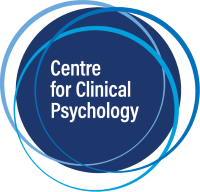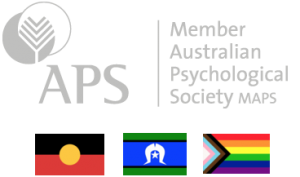Can clients get better by having an intensive episode of care? Clients attending for 10 to 15 sessions of therapy over a two to three week period might sound counter intuitive when the problem is complex, chronic and severe PTSD for many years. Sciarrino and colleagues (2020) completed a systematic review of the literature on intensive or massed treatment to find out if it was possible to treat PTSD in an intensive manner. In their review they examined PTSD treatments delivered more than twice weekly. These treatments were also delivered in an outpatient context, which is like attendance at a private clinic.
They reported individual studies found a large impact of treatment on reduction of PTSD symptoms, ds = 1.15–2.93. Similarly, they reported a pooled dropout rate of 5.51% across studies.
This dropout rate is considerably lower than what has been reported in research on standard delivery of trauma-focused treatment (over weeks) which has reported dropout rates ranging from 18% to 39%; (Berke et al., 2019; Eftekhari et al., 2019; Hembree et al., 2003; Imel et al., 2013; Steenkamp et al., 2015; Zayfert et al., 2005).
Sciarrino and team (2020) also reported that in the studies which had follow-up assessments the intensive treatments were associated with large improvements in PTSD symptoms at posttreatment – Cohen’s ds = 0.74–2.59. (Bryan et al., 2018; Ehlers et al., 2010, 2014; Foa et al., 2018; Hendriks et al., 2018; Hurley, 2018; Van Woudenberg et al., 2018). The studies varied with different time points for follow up being 3 months, 6 months, 9 months, and 12 months)
Summary
While the findings in Sciarrino et al. (2020) review suggest that intensive delivery of PTSD treatments can be an effective alternative to standard delivery. Clinician and client’s might need to spend some time getting their head around the idea of intensive treatment for PTSD. This might require some examination of beliefs such as “that’s really intense”, “how will I cope” and “I am not sure I can do it”.
Clinician might ask themselves why they would not offer a therapy intensively that has good outcomes, especially when those outcomes seem to stick.
References
Sciarrino, N.A., Warnecke, A.J. and Teng, E.J. (2020), A Systematic Review of Intensive Empirically Supported Treatments for Posttraumatic Stress Disorder. JOURNAL OF TRAUMATIC STRESS, 33: 443-454. https://doi.org/10.1002/jts.22556
References for drop out rates
Berke, D. S., Kline, N. K.,Wachen, J. S., McLean, C. P., Yarvis, J. S., Mintz, J., Young-McCaughan, S., Peterson, A. L., Foa, E.B., Resick, P.A.,&Litz,B. T. (2019). Predictors of attendance and dropout in three randomized controlled trials of PTSD treatment for active duty service members. Behaviour Research and Therapy, 118, 7–17. https://doi.org/10.1016/j.brat.2019.03.003
Eftekhari, A., Crowley, J. J., Mackintosh, M.-A., & Rosen, C. S. (2020). Predicting treatment dropout among veterans receiving prolonged exposure therapy. Psychological Trauma: Theory, Research, Practice, and Policy, 12(4), 405–412. https://doi.org/10.1037/tra0000484
Hembree, E.A., Foa, E.B., Dorfan, N.M., Street, G.P., Kowalski, J. and Tu, X. (2003), Do patients drop out prematurely from exposure therapy for PTSD?. J. Traum. Stress, 16: 555-562. https://doi.org/10.1023/B:JOTS.0000004078.93012.7d
Imel, Z. E., Laska, K., Jakupcak, M., & Simpson, T. L. (2013). Meta-analysis of dropout in treatments for posttraumatic stress disorder. Journal of Consulting and Clinical Psychology, 81(3), 394–404. https://doi.org/10.1037/a0031474
Steenkamp MM, Litz BT, Hoge CW, Marmar CR. Psychotherapy for Military-Related PTSD: A Review of Randomized Clinical Trials. JAMA. 2015;314(5):489–500. doi:10.1001/jama.2015.8370
Zayfert, C., DeViva, J. C., Becker, C. B., Pike, J. L., Gillock, K. L., & Hayes, S. A. (2005). Exposure utilization and completion of cognitive behavioral therapy for PTSD in a “real world” clinical practice. Journal of Traumatic Stress, 18(6), 637–645. https://doi.org/10.1002/jts.20072
References for follow up effectiveness
Bryan, CJ, Leifker, FR, Rozek, DC, et al. Examining the effectiveness of an intensive, two‐week treatment program for military personnel and veterans with PTSD: results of a pilot, open‐label, prospective cohort trial. J Clin Psychol. 2018; 74: 2070– 2081. https://doi.org/10.1002/jclp.22651
Ehlers, A., Clark, D., Hackmann, A., Grey, N., Liness, S., Wild, J., . . . McManus, F. (2010). Intensive Cognitive Therapy for PTSD: A Feasibility Study. Behavioural and Cognitive Psychotherapy, 38(4), 383-398. doi:10.1017/S1352465810000214
Foa EB, McLean CP, Zang Y, et al. Effect of Prolonged Exposure Therapy Delivered Over 2 Weeks vs 8 Weeks vs Present-Centered Therapy on PTSD Symptom Severity in Military Personnel: A Randomized Clinical Trial. JAMA. 2018;319(4):354–364. doi:10.1001/jama.2017.21242
Lotte Hendriks, Rianne A. de Kleine, Theo G. Broekman, Gert-Jan Hendriks & Agnes van Minnen (2018) Intensive prolonged exposure therapy for chronic PTSD patients following multiple trauma and multiple treatment attempts, European Journal of Psychotraumatology, 9:1, DOI: 10.1080/20008198.2018.1425574
Hurley, E. C. (2018). Effective treatment of veterans with PTSD: Comparison between intensive daily and weekly EMDR approaches. Frontiers in Psychology, 9. https://doi.org/10.3389/fpsyg.2018.01458
Van Woudenberg, C., Voorendonk, E. M., Bongaerts, H., Zoet, H. A., Verhagen, M., Lee, C. W., van Minnen, A., & De Jongh, A. (2018). Effectiveness of an intensive treatment programme combining prolonged exposure and eye movement desensitization and reprocessing for severe post-traumatic stress disorder. European Journal of Psychotraumatology, 9(1), 1487225. https://doi.org/10.1080/20008198.2018.1487225



